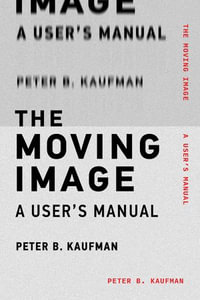
At a Glance
eText
$189.00
or
Instant online reading in your Booktopia eTextbook Library *
Read online on
Desktop
Tablet
Mobile
Not downloadable to your eReader or an app
Why choose an eTextbook?
Instant Access *
Purchase and read your book immediately
Read Aloud
Listen and follow along as Bookshelf reads to you
Study Tools
Built-in study tools like highlights and more
* eTextbooks are not downloadable to your eReader or an app and can be accessed via web browsers only. You must be connected to the internet and have no technical issues with your device or browser that could prevent the eTextbook from operating.
ISBN: 9783319520001
ISBN-10: 3319520008
Series: Springer Series in Wireless Technology
Published: 16th January 2017
Format: PDF
Language: English
Publisher: Springer Nature
You Can Find This eBook In
Non-FictionEngineering & TechnologyElectronics & Communications EngineeringCommunications Engineering & TelecommunicationsComputing & I.T.Graphical & Digital Media ApplicationsElectronics EngineeringComputer Networking & CommunicationsEDI Electronic Data InterchangeComputer ScienceImage ProcessingOther Technologies & Applied Sciences
This product is categorised by
- Non-FictionEngineering & TechnologyElectronics & Communications EngineeringCommunications Engineering & Telecommunications
- Non-FictionComputing & I.T.Graphical & Digital Media Applications
- Non-FictionEngineering & TechnologyElectronics & Communications EngineeringElectronics Engineering
- Non-FictionComputing & I.T.Computer Networking & CommunicationsEDI Electronic Data Interchange
- Non-FictionComputing & I.T.Computer ScienceImage Processing
- Non-FictionEngineering & TechnologyOther Technologies & Applied SciencesApplied OpticsImaging Systems & Technology
- Non-FictionComputing & I.T.Computer ScienceArtificial IntelligenceComputer Vision
- Non-FictionComputing & I.T.Computer ScienceDigital Signal Processing (DSP)
- Non-FictionComputing & I.T.Computer Hardware























